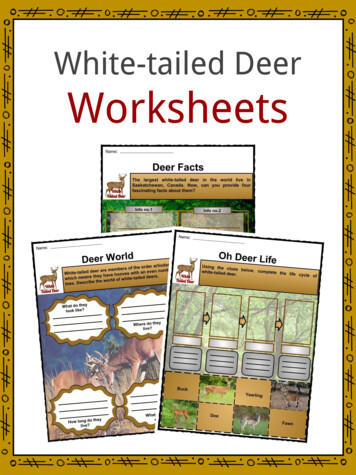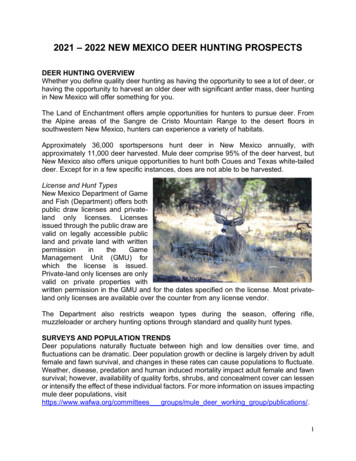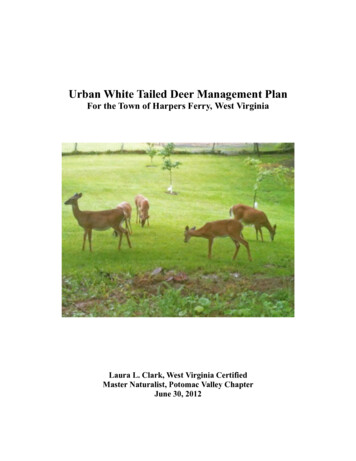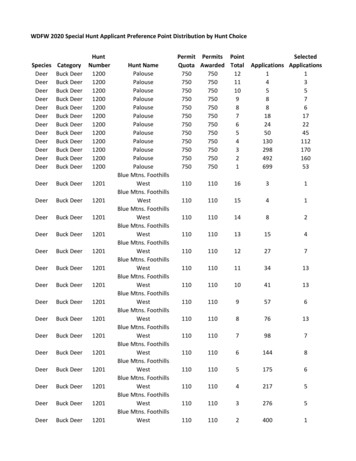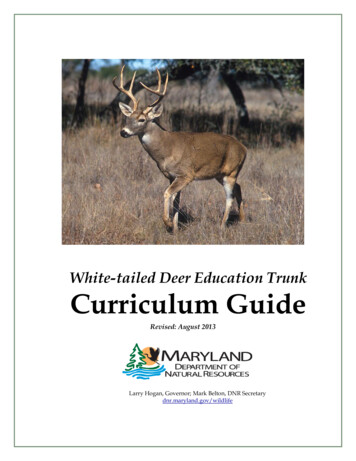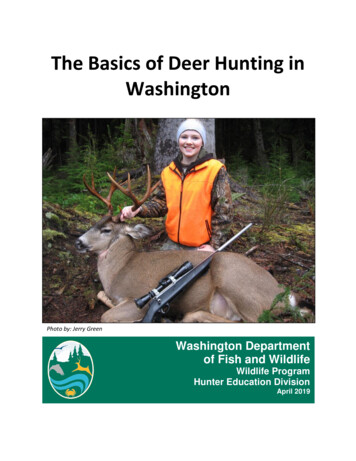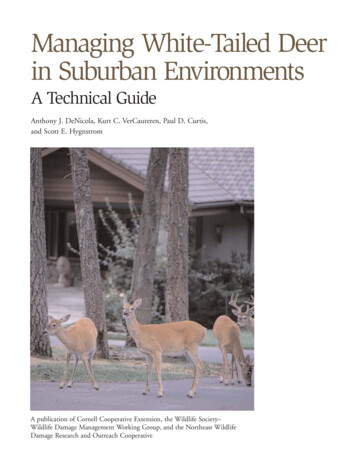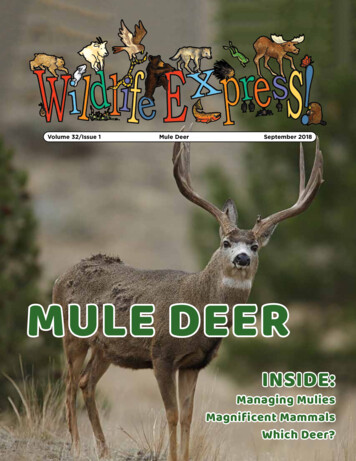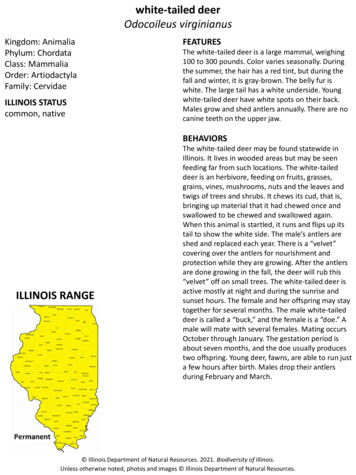
Transcription
white-tailed deerOdocoileus virginianusKingdom: AnimaliaPhylum: ChordataClass: MammaliaOrder: ArtiodactylaFamily: CervidaeILLINOIS STATUScommon, nativeFEATURESThe white-tailed deer is a large mammal, weighing100 to 300 pounds. Color varies seasonally. Duringthe summer, the hair has a red tint, but during thefall and winter, it is gray-brown. The belly fur iswhite. The large tail has a white underside. Youngwhite-tailed deer have white spots on their back.Males grow and shed antlers annually. There are nocanine teeth on the upper jaw.BEHAVIORSILLINOIS RANGEThe white-tailed deer may be found statewide inIllinois. It lives in wooded areas but may be seenfeeding far from such locations. The white-taileddeer is an herbivore, feeding on fruits, grasses,grains, vines, mushrooms, nuts and the leaves andtwigs of trees and shrubs. It chews its cud, that is,bringing up material that it had chewed once andswallowed to be chewed and swallowed again.When this animal is startled, it runs and flips up itstail to show the white side. The male’s antlers areshed and replaced each year. There is a “velvet”covering over the antlers for nourishment andprotection while they are growing. After the antlersare done growing in the fall, the deer will rub this“velvet” off on small trees. The white-tailed deer isactive mostly at night and during the sunrise andsunset hours. The female and her offspring may staytogether for several months. The male white-taileddeer is called a “buck,” and the female is a “doe.” Amale will mate with several females. Mating occursOctober through January. The gestation period isabout seven months, and the doe usually producestwo offspring. Young deer, fawns, are able to run justa few hours after birth. Males drop their antlersduring February and March. Illinois Department of Natural Resources. 2021. Biodiversity of Illinois.Unless otherwise noted, photos and images Illinois Department of Natural Resources.
buckdoe Illinois Department of Natural Resources. 2021. Biodiversity of Illinois.Unless otherwise noted, photos and images Illinois Department of Natural Resources.
Illinois Department of Natural Resources. 2021. Biodiversity of Illinois.Unless otherwise noted, photos and images Illinois Department of Natural Resources.
Illinois Department of Natural Resources. 2021. Biodiversity of Illinois.Unless otherwise noted, photos and images Illinois Department of Natural Resources.
doe with fawn Illinois Department of Natural Resources. 2021. Biodiversity of Illinois.Unless otherwise noted, photos and images Illinois Department of Natural Resources.
fawnbuck in velvetscattrack Illinois Department of Natural Resources. 2021. Biodiversity of Illinois.Unless otherwise noted, photos and images Illinois Department of Natural Resources.
rub made with antlersscrapeAquatic Habitatsbottomland forests; marshes; peatlands; swamps; wet prairies and fensWoodland Habitatsbottomland forests; coniferous forests; southern Illinois lowlands;upland deciduous forestsPrairie and Edge Habitatsblack soil prairie; dolomite prairie; edge; gravel prairie; hill prairie; sandprairie; shrub prairie Illinois Department of Natural Resources. 2021. Biodiversity of Illinois.Unless otherwise noted, photos and images Illinois Department of Natural Resources.
The white-tailed deer is a large mammal, weighing 100 to 300 pounds. Color varies seasonally. During the summer, the hair has a red tint, but during the fall and winter, it is gray -brown. The belly fur is white. The large tail has a white underside. Young white-tailed deer have white spots on their back. Males grow and shed antlers annually.
